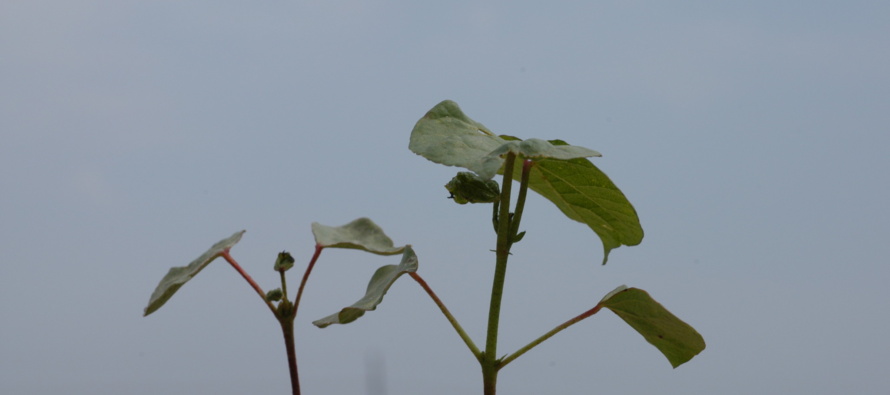Impact of Environmental Conditions on Thrips Management in Cotton and Peanut

Related Articles
- Evaluation of Peanut Varieties in Mississippi, 2010 0
- Evaluation of Peanut Prescription Rx Program in Mississippi 0
- Evaluation of Tillage Systems as Related to Peanut Yield 0
Latest Tweets
We had unseasonably warm weather and good planting conditions during late March and early April. As a result, several cotton and peanut fields have been planted throughout Mississippi over the last month. Unfortunately, the weather has taken a turn for the worse and that is going to negatively impact thrips management in both crops. Regardless of what strategy was used at-planting, seed treatment or in-furrow spray, the two main enemies of insecticides used at planting are time and water.
In general, we can expect to get about 2-3 weeks of control with a neonicotinoid seed treatment (Cruiser or Gaucho based) or 3-4 weeks control with a neonicotinoid sprayed in-furrow (Admire Pro). It is important to remember that the clock starts ticking as soon as the seeds go in the ground, not when the plants emerge. Even if the plants emerged fairly quickly when temperatures were warmer, the cooler temperatures over the last couple of weeks have slowed plant growth to a crawl (if they are growing at all). This has resulted in plants staying at the stages where they are still highly susceptible to yield losses from thrips for a longer period of time.
In addition to cooler temperatures, we have had a lot of rain in most areas of the state. Insecticides used at-planting for thrips management have to be taken up by the roots and translocated to the growing point to provide effective control. For this to happen, the insecticides need to be fairly water soluble. This water solubility that is needed for the insecticides to work can also be bad with too much water and the insecticides can be washed out of the root zone.
The data below are from a graduate student, Mr. Joel Moor. The main objective of his research was to look at the impact of herbicide injury on thrips management in peanut. He used furrow irrigation to basically flood certain plots to mimic a heavy rainfall event that causes Valor injury. One thing he observed is that where Admire Pro was used (white bars) and the plots were heavily watered, thrips injury was more severe and peanut yields were lower than where Admire Pro was used and the plots were not flooded. In fact, he was able to get better results from foliar applications of acephate when the plots were watered.
Fortunately, all of the rain has not only impacted the at-planting insecticides in cotton and peanuts, the heavier showers have likely reduced thrips populations as well. However, warmer and drier conditions are in the forecast for the next 7 to 10 days. Thrips populations will likely rebound very quickly under those conditions and most of the early planted cotton and peanuts will be susceptible to significant injury regardless of the use of an at-planting insecticide. Those earliest planted fields have already had a rough start and will need to be intensively scouted until they get out of the thrips susceptible stage. In many situations, a foliar spray may be warranted to prevent yield losses and help fields recover from early other stresses.





Let me tell You a sad story ! There are no comments yet, but You can be first one to comment this article.
Write a comment